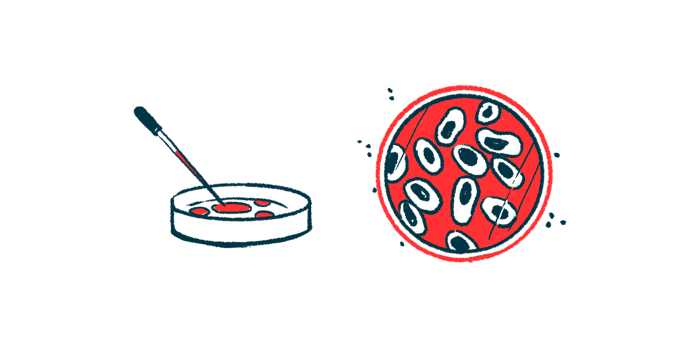Rare CFTR-active airway cell grown from CF patients
Pulmonary ionocytes make up about 1% of all cells
Written by |

A rare cell type that lines the airways, called pulmonary ionocytes, was successfully generated from stem cells derived from people with cystic fibrosis (CF), a study reports.
Among all the cell types that line the airways, the recently discovered ionocytes, which make up about 1% of cells, have the highest level of CFTR gene activity, the mutation of which causes CF.
This achievement will allow for a detailed study of ionocytes, which will shed light on CF lung biology and support the development of regenerative medicines, such as cell-based or gene therapies.
“Maybe we could correct patients’ ionocytes and put them back in the lungs,” study lead Ruby Wang, MD, division of pulmonary medicine at Boston Children’s Hospital, in Massachusetts, said in a hospital news release. “This is why it’s exciting.”
The study, “De novo generation of pulmonary ionocytes from normal and cystic fibrosis human induced pluripotent stem cells,” was published in the American Journal of Respiratory and Critical Care Medicine.
Types of cells that line the airways include basal and club cells — precursor cells that give rise to other cell types — and ciliated (brush-like) cells, which together with mucus, help keep airways clean. Other types include tuft cells, with sensory functions, and secretory goblet cells, the lungs’ main mucus producers.
The pulmonary ionocyte, a previously unknown cell type, was recently discovered and unexpectedly had the highest CFTR gene activity, or expression, level among airway cells.
“When I was in medical school, the gospel was that the CFTR mutation was in the ciliated cells,” Wang said. “We didn’t believe in ionocytes at the time, and didn’t expect to make them.”
Generating pulmonary ionocytes from iBCs
Wang and colleagues have created basal-like cells from human induced pluripotent stem cells (iPSCs) — mature cells reprogrammed back to a stem cell-like state that can give rise to almost every cell type. These iPSC-derived basal-like cells (iBCs) showed features of airway stem cells, which can self-renew or transform into secretory or ciliated cells.
To create pulmonary ionocytes, the researchers stimulated iBCs and sorted them using a cell surface protein called NGFR. With two rounds of sorting, iBCs transferred to 2D air-liquid interface (ALI) culture, a human airway model, gave rise to basal, secretory, ciliated, and ionocyte cells.
The team then generated iPSC cell lines derived from two CF patients carrying F508del, the most common CF-causing CFTR mutation. Control cell lines were also grown wherein the CF cell mutation was corrected using CRISPR gene editing.
All four iPSC lines gave rise to secretory, basal, and ciliated cells. Among them, one cluster of cells was enriched in ionocyte markers, which made up on average 0.95% of cells. No differences were observed between mutated and corrected cells.
“The [about] 1% frequency of iPSC-derived putative ionocytes is consistent with published frequencies of primary ionocytes in mouse and human large airways,” the researchers wrote.
CFTR activity was highest in iPSC-derived ionocytes per cell compared with other cell types, which was “consistent with prior observations.” However, CFTR activity occurred in more cells of different types.
Among CFTR-positive cells, 7.5% were ionocytes, 63% were secretory cells, 20% were cells transitioning from basal to secretory, 3.9% were basal cells, and 5% were ciliated cells. Again, CFTR activity, either levels or frequencies, was similar between CF and CFTR-corrected iPSCs.
“Ionocytes express high levels of CFTR and make up only a small portion of CFTR-[positive] cells,” the researchers wrote.
A comparison of iPSC-derived ionocytes to primary ionocytes, cultured directly from humans, found similar activity levels and frequencies of most ionocyte markers. Also, the over-expression of the protein FOXI1 generated more iPSC-derived ionocytes, a feature also consistent with primary ionocytes.
“Overall our results indicate the successful directed [growth] of normal and cystic fibrosis iPSCs via iBCs into a human ionocyte-like population,” the researchers concluded, noting this will provide “a source of cells with relevance for basic studies and potential future applications for regenerative medicine.”
Because these ionocytes resembled nerve cells with long extensions, the researchers said they might play a role in regulating other cell types.
“Now we need to find out ionocytes’ developmental origin and function,” Wang said. “That’s hard to study because they’re so rare.”
Undertaken with colleagues at Boston Children’s, Wang’s work is part of the Pulmonary Cellular Therapeutics Initiative to find new treatments for lung diseases.







